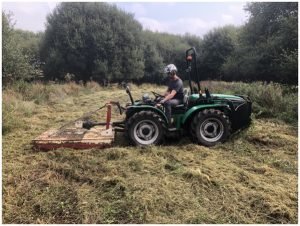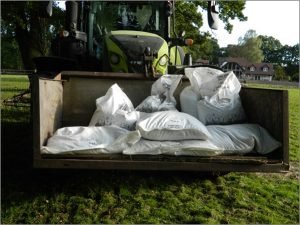New Forest insects given new lease of life thanks to novel approach
PUBLISHED ON: 23 MAY 2025More than 24 acres of grassland – the equivalent of more than 13 football pitches – have been planted with wildflowers to help boost insect numbers in the New Forest.
Hampshire and Isle of Wight Wildlife Trust has been working with six private landowners in the west of the Forest as part of a Species Survival Fund (SSF) project to increase the number of species as well as their habitats.
The Trust is creating stepping stones of habitat across the landscape, helping species expand from the inner core of the Forest to its outer edges.
More than 550 metres of new hedgerows have also been planted as part of the New Forest National Park Authority-led project to provide additional habitat for insects and animals which rely on them, such as birds and bats.
The work focuses on areas that have historically had low numbers of flowering plants.
Senior nature recovery manager (New Forest & Lower Test Valley) for Hampshire & Isle of Wight Wildlife Trust, Tracé Cooper-Williams, said: ‘The UK is experiencing serious decline in flying insects – a staggering 60 per cent over the last 20 years.
‘Many of those species are pollinators and as part of our work for the SSF project, we wanted to do something to help those species in the New Forest.
‘The project provided us with a great opportunity to boost local pollinator populations by creating habitat to enable species to spread out from the core of the Forest.
‘We have planted 552 metres of new hedgerows and laid 195 metres of existing hedgerow, while nearly 250 metres of gaps in existing hedgerows have been filled in to create connectivity between habitats.’

The wildlife charity has been carrying out the work alongside landowners and farmers to increase the abundance of flowering plants on their land.
On one site, as many as 4,000 wildflower plug plants were planted in a wide strip that snaked across the field – measuring one metre by 800 metres – to enhance the meadow.
As the wildflowers blossom and set seed, they will spread out into the surrounding fields, linking up habitats and enabling pollinating insects to expand across the landscape.
‘Our purpose is to add native wildflower mix to boost the biodiversity of insects and pollinators in the area,’ explained Lucy Kernick, project assistant for the Trust.
‘The idea for the hedges is that they will benefit pollinators, birds and reptiles.
‘We have seeded lots of smaller fields and we are hoping to create a stepping stone effect so that pollinators can have less of a journey to travel when they’re trying to move from one suitable habitat to another.
‘Hopefully, having to make several smaller journeys rather than one big one will help boost pollinators and insect numbers in the Forest.’

Bags of wildflower seeds (credit: HIWWT)
The work has not been without its challenges, however, with identifying fields which meet the relevant criteria one of the most difficult areas.
‘Not all sites are suitable,’ said Tracé. ‘Previous land use is really important to see if it has received lots of fertiliser because wildflowers need nutrient poor soils.
‘The soil also has to be tested; the pH identifies the soil type and what can and cannot grow there. We also need to consider if the current management practices will allow the wildflowers to establish and flourish in the future.’
The Trust is one of five partner organisations involved in the £1.3million SSF project alongside Amphibian and Reptile Conservation (ARC), Freshwater Habitats Trust (FHT), New Forest Commoners Defence Association (CDA) and Wild New Forest.
A core aim of the conservation work by partners is to ensure New Forest habitats overall are better equipped and more resilient to the ongoing impact of climate change.
The project is funded by the Government’s Species Survival Fund. The fund was developed by Defra and its Arm’s-Length Bodies. It is being delivered by The National Lottery Heritage Fund in partnership with Natural England and the Environment Agency.

